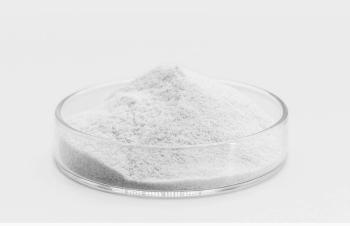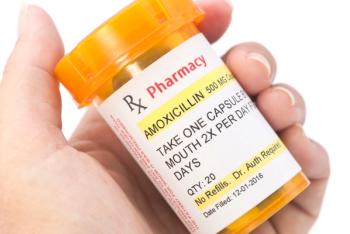
- Pharmaceutical Technology-04-02-2014
- Volume 38
- Issue 4
Navigating the Regulatory Landscape of Combination Products
Mark D. Kramer talks about combination products from a regulatory perspective and explains the implications of FDA's final rule on current GMP requirements for combination products.
While the success and potential of combination products in advancing patient care and making treatments safer and more effective have contributed to its rapid market growth, the regulatory framework for combination products can raise a variety of challenges for the industry. The diversity in the types of combination products means there is no “one-size-fits-all” approach. Pharmaceutical Technology interviews Mark D. Kramer, former director of FDAs Office of Combination Products, and currently, president of the consulting firm, Regulatory Strategies Inc. (email:
Regulatory definition
PharmTech: What is the regulatory definition of a combination product?
Kramer: Under 21 CFR 3.2 (e), a combination product is defined as a combination of different types of regulated products (i.e., a drug and a device; a drug and a biological product; a device and a biological product; or a combination of a drug, device, and biological product) (1, 2).
FDA recognizes three different ways that the components (called ‘constituent parts’) of the combination product may be combined to meet the combination product definition:
- Physically/chemically combined (‘single-entity’ combination product). Examples include antimicrobial-coated catheter; drug-eluting stent; syringe or injector pen prefilled with a drug or biological product.
- Packaged together (‘co-packaged’ combination product). Examples include drug vial packaged with an empty syringe or injector pen; convenience kit containing a catheter, gloves, and anesthetic or antimicrobial jelly.
- Labeled specifically for use together (‘cross-labeled’ combination product). These are separate products that are neither physically combined nor packaged together, but brought together or ‘combined’ only through their labeling in that each product label individually specifies the use of the other product. The United States is unique in recognizing cross-labeled constituent parts to be combination products. Cross-labeled products sometimes raise challenging regulatory issues, particularly where different companies are involved in the development of the respective constituent parts. Examples include drug cartridge and separately provided, dedicated injector pen; photodynamic therapy drug and activating light source.
Unlike the EU, in the US, the order of the terms typically has no meaning in describing the primacy of the drug or device constituent part. The term ‘drug/device combination product’ is typically used to describe a combination product comprised of a drug and a device even when the primary or principal mode of action is provided by the device constituent part.
Key drivers
PharmTech: What are the key drivers for the development of combination products?
Kramer: Combination products have the potential to enhance the safety and/or effectiveness of either product used alone. The use of a drug coating on a device may help make the device more effective, or less likely to cause adverse events, than the device itself. For example, the drug coating on a stent is helpful in preventing the restenosis that may occur after stent implantation, and thus, can help reduce the need for additional surgery. The use of a novel device for local drug delivery may allow a drug to reach local concentrations that would be difficult to achieve as safely if the drug were to be administered systemically. The use of a companion diagnostic device may allow a drug to be targeted to patients most likely to benefit from it or least likely to experience the drug’s side effects.
While the above are examples where the use of the ‘other product’ can enhance the safety or effectiveness of the first product, there are also situations where the ‘other product’ is required. An example in this category is the light source used for photodynamic therapy or photodynamic diagnostic drug products. Without the light source (typically a laser or LED light source) to activate the drug or to illuminate the drug for diagnostic purposes, the drug product provides no therapeutic or diagnostic effect.
Another driver for the development of a combination product is to obtain a regulatory benefit that may help provide a competitive advantage. For example, an additional new drug product exclusivity period may be potentially achieved through the development of a novel method of drug delivery if clinical studies are required to support the new approval. In addition, if a new combination product becomes the standard of care because of the recognized safety or effectiveness benefits, the developer can enjoy a competitive advantage until other companies complete the required studies to support marketing authorization of their products.
Challenges for manufacturersPharmTech: What challenges do combination products present to manufacturers?
Kramer: Hopefully the benefits of combination product development for manufacturers, healthcare providers, and patients will outweigh the challenges, but it’s clear that combination products raise some unique challenges not presented by conventional drugs and devices.
Manufacturers accustomed to dealing only with drugs or devices may need to broaden their in-house and consulting expertise to be able to sufficiently anticipate and address the scientific, technical, and regulatory issues that may emerge. Device companies, typically taking an engineering focus, may not have the requisite experience in dealing with issues frequently arising in pharmaceutical development. For example, device manufacturers that start out considering a drug coating to be like any other device component or coating, may be surprised at the rigor with which regulatory authorities will expect the drug’s dose, elution characteristics, and stability to be evaluated. Likewise, pharmaceutical companies well-versed in drug synthesis, pharmaceutical manufacturing, and quality control will likely find the device design control requirements under ISO 13485 or 21 CFR 820 or the need for human factors/usability studies to require rethinking of their product development process (3, 4).
Scientific and technical challenges may arise regarding the compatibility of the device and drug. For example, new dose-ranging or pharmacokinetic studies may be necessary for approved drugs being delivered locally through the use of a device. The potential for extractables and leachables of the device materials into the drug substance or drug adhesion/absorption to the device materials affecting the delivered dose may need to be considered. Residues from device manufacture could have an impact on drug performance characteristics. Either component could affect the stability of the other.
Regulatory challenges may also emerge. The US has different regulatory paradigms for devices, drugs, and biological products. When these products are combined, there is some flexibility in terms of how these varying requirements will be applied. That flexibility allows FDA to tailor the regulatory controls as appropriate to the combination product, but at the same time, may create uncertainty on the part of the manufacturer as well as FDA staff in terms of precisely how a given combination product will be regulated. Similar to the EU, the US uses a ‘primary mode of action’ (PMOA) approach when regulating combination products. In the US, however, PMOA directly influences only assignment to a lead-reviewing center, not the regulatory authorities to which the product will be subject. While most combination products in the US are regulated under a single marketing authorization application, in some cases, FDA may require separate marketing applications for the individual constituent parts of the combination product. There are also situations where FDA may permit the use of a single marketing application for the combination product, but manufacturers may prefer separate marketing applications for the constituent parts, often to derive some type of regulatory benefit from the separate approval/clearance of the constituent parts. Finally, there can be uncertainty in how post-market regulatory requirements, such as GMP requirements and vigilance reporting, will be handled.
GMP requirementsPharmTech: Can you tell us more about the current GMP requirements for combination products? What are the implications of FDA’s final rule on manufacturers of combination products?
Kramer: There is more clarity about the current GMP requirements to which combination products are subject since the FDA’s publication of a final rule in January 2013. This rule, codified at 21 CFR 4, went into effect in July 2013 and applies to all ‘single-entity’ and ‘co-packaged’ combination products (i.e., new products as well as legacy products already being manufactured prior to the rule’s effective date) (5).
The rule takes the position that a combination product comprised of both a drug and a device is subject to both sets of GMP requirements—21 CFR 210 and 211 for finished pharmaceuticals (6), and 21 CFR 820 for devices (4), regardless of how the product is regulated. In other words, a prefilled syringe regulated as a drug product and a drug-coated catheter regulated as a device are both subject to drug GMPs under 21 CFR 210/211 and device GMPs under 21 CFR 820.
Under the final rule, a manufacturer has two options for ensuring compliance. The first option is for the manufacturer to comply with both sets of regulations outright (i.e., implement a quality system that fully incorporates 21 CFR 210/211 and 21 CFR 820). The rule, however, provides a creative option to compliance that recognizes the inherent similarities in the underlying GMP regulations and FDA’s determination that it should be unnecessary for companies to fully implement both sets of requirements to be compliant. Under FDA’s ‘streamlined approach’ permitted by the regulation, a manufacturer may elect to use either 21 CFR 210/211 or 21 CFR 820 as their ‘umbrella’ current good manufacturing practice operating system, provided that they also incorporate specific key provisions of the ‘other set’ of regulations. In addition, combination products including biological products must incorporate relevant provisions of 21 CFR 600-680 and 21 CFR 1271 (7, 8).
For example, a pharmaceutical company making a single entity or co-packaged drug/device (or device/drug) combination product operating in compliance with 21 CFR 210/211, could continue using 21 CFR 210/211 as their umbrella quality system provided they also incorporate the following six provisions from 21 CFR 820 (as applicable)—design controls; purchasing controls; corrective and preventive action (CAPA); management responsibility; installation; and servicing.
The same company, making the same product, could choose to operate a quality system compliant with 21 CFR 820 provided that it also incorporates the following eight specified provisions of 21 CFR 211—calculation of yield; expiration dating; stability testing; testing and approval/rejection of components, drug product containers and closures; testing and release for distribution; special testing requirements; reserve samples; and tamper-evident packaging for over-the-counter products.
The ‘streamlined approach’ is available when both the drug and device constituent parts ‘have arrived at’ or are being manufactured at the same facility. This means that if Facility A manufactures only the active pharmaceutical ingredient (API) used in a combination product, while Facility B manufactures both the API and device into the finished combination product, only Facility B can use the streamlined approach. Since Facility A manufactures only a drug product in this example, it must comply with 21 CFR 210/211.
As noted previously, 21 CFR 4 is now in effect for ‘single entity’ and ‘co-packaged’ combination products. Since ‘cross-labeled’ combination products are by definition separately manufactured and provided, they are not subject to these requirements and instead, each constituent part is subject to its respective GMP requirements.
FDA has begun inspecting manufacturers to these new requirements and it is important that companies have procedures in place to ensure compliance. For pharmaceutical companies with a modern quality system incorporating management responsibility, purchasing controls and CAPA, design controls are likely to be the main gap. Companies should be prepared to show that they understand the requirements and how they have implemented them at each facility involved in the combination product manufacture.
Manufacturers should also be aware that the final Unique Device Identifier (UDI) rule (9), published in September 2013 with compliance deadlines beginning in September 2014, applies to combination products as well. In addition, manufacturers should be on the lookout for an anticipated final rule on post-market vigilance reporting requirements for combination products; a proposed rule was published in 2009 and a final rule continues to be anticipated.
References
1. FDA,
2. Code of Federal Regulations, Title 21, Food and Drugs (Government Printing Office, Washington, DC),
3. ISO 13485:2003 Medical devices--Quality management systems--Requirements for regulatory purposes.
4. Code of Federal Regulations, Title 21, Food and Drugs (Government Printing Office, Washington, DC)
5. FDA, 21 CFR 4 “
6. Code of Federal Regulations, Title 21, Food and Drugs (Government Printing Office, Washington, DC)
7. Code of Federal Regulations, Title 21, Food and Drugs (Government Printing Office, Washington, DC)
8. Code of Federal Regulations, Title 21, Food and Drugs (Government Printing Office, Washington, DC)
9. The Federal Register, "
About the Author
Adeline Siew is the scientifc editor for Pharmaceutical Technology.
Articles in this issue
over 11 years ago
SyncOperations Software Helps Increase Workflowover 11 years ago
Drug Encapsulation for Patient-Centric Dosingover 11 years ago
The Benefits of eClinical Systems in Supply-Chain Managementover 11 years ago
Publishing Beyond the Printed Pageover 11 years ago
Global Instability Affects the Pharma Market in BrazilNewsletter
Get the essential updates shaping the future of pharma manufacturing and compliance—subscribe today to Pharmaceutical Technology and never miss a breakthrough.




